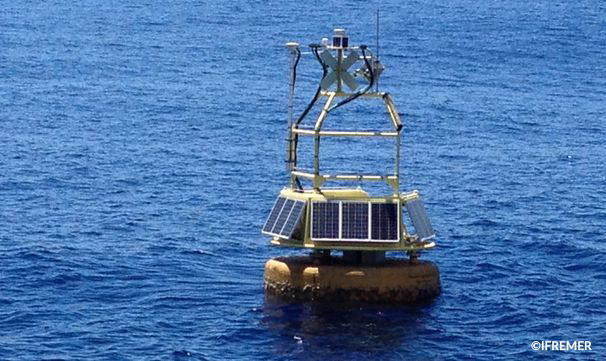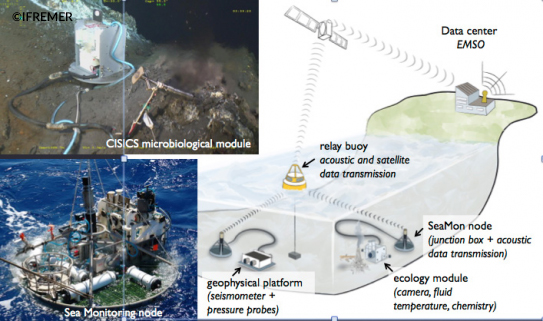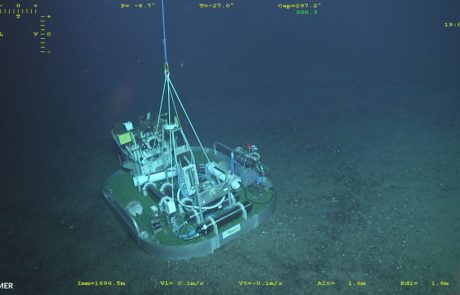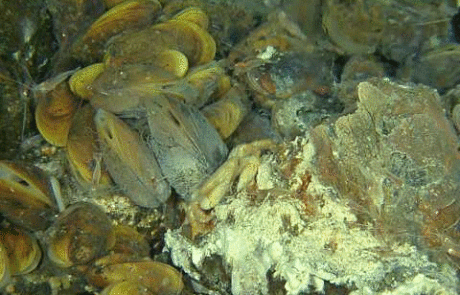Project Description
EMSO-AZORES
SUMMARY
Set atop an active volcano, the Lucky Strike, and its hydrothermal field, EMSO-Azores observatory gives unique research opportunities. The hydrothermal vent, which is a fissure in Earth’s surface from which hot water come out, can be investigated with a multidisciplinary approach. The hosted peculiar fauna and microbial communities, the water composition and circulation are studied. Being at the Mid-Atlantic ridge, where tectonic plates diverge, the site allow to study closely tectonic and volcanic activities.
EMSO scientific disciplines: geosciences, physical oceanography, biogeochemistry, marine ecology

General information
Location: Mid-Atlantic ridge near Azores
Distance from land: 200 NM
Max water depth: 1700 m
Date 1st deployment: October 2010
Supported by: France
Operated by: IFREMER, CNRS
Website: http://www.emso-fr.org/
Status: running (updated November 2017)
Regional Team Leader: Pierre-Marie Sarradin, Ifremer
Scientific objectives
Understand the links between geological, physical and chemical processes and their effects on the dynamics of the hydrothermal fauna at different spatial and temporal scales at the Lucky Strike vent field.
Description of the infrastructure
The current observatory setup has been operated since 2010. It is composed of two seafloor nodes with connected instruments for sea monitoring (SeaMon), and of a transmission buoy that communicates acoustically with the seafloor stations and relays data (detection of seismic events, pressure at seafloor, video snapshots of hydrothermal fauna, turbidity, fluid temperature and chemistry, system status) via satellite every six hours to the EMSO data center hosted at Ifremer in Brest, France.





